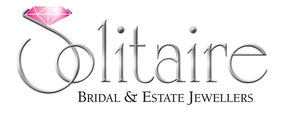 It’s no surprise that the decision of buying an engagement ring is one that you approach with uncertainty and caution.
It’s no surprise that the decision of buying an engagement ring is one that you approach with uncertainty and caution.
To get started, the first thing you need to know is that all diamonds will look the same to you. Exquisite, delicate and sparkly; diamonds often have that effect on almost everyone.
However, we assume you’ve done your homework. You know that there is more to diamonds than just the sparkle!
Diamonds are judged on the basis of the four Cs; cut, clarity, color and carat, details of which we’ve explained in our previous blog.
But aside from the diamond itself, another thing you must factor in is the setting.
Different Types of Engagement Ring Setting
Prong Setting
The most common ring setting is the prong setting.
This setting uses little metal claws to grip the diamond rightly. Usually designed in rounded, pointed, flat and even v-shaped cuts, the prong setting uses 4-6 claws to secure the diamond.
This setting allows light to pass through the diamond, adding color to its beauty.
Tiffany Setting
Designed by Tiffany & Co. in 1886, the Tiffany setting uses a specific six-prong setting to maximize the passage of light. Distinguished by the knife edge of its prongs, the Tiffany setting has now become quite common. In fact, similar designs can be found in almost any jewelry shop.
Bezel Setting
Popular because of its modern look and secure style, the bezel look is the perfect setting for those with an active lifestyle since the setting encircles the diamond entirely and holds it tightly in place.
The bezel look is very safe for those who are looking for a setting that won’t allow any damage to the ring and won’t snag on any fabrics or such.
Tension Setting
This setting uses the tension of a metal band to secure the diamond in place, thus creating the illusion that the stone is suspended between the two sides of the band.
Using lasers to calibrate the dimensions of the stone, the jeweler cuts tiny grooves in the band to use pressure in this custom design.
However, this is expensive to design because of its intricacy. But you don’t have to worry about security since this design uses prongs underneath the stone to hold it in place.
Chanel Setting
As a very popular setting for wedding bands, this design uses a diamonds in metal channel of stones fixed in a band on either sides of the main diamond.
Set closely into the grooves of the band, the diamonds decorate all sides of the band, thus giving a brilliant effect. And since there no prongs, this setting offers a snag free and safe design.
Pavé setting
To make the center stone pop, this setting uses more diamonds to add sparkle. Because the entire band around the stone is encrusted with more stones, it can be very difficult to resize the ring after it has been set. So if you’re choosing a pavé setting for your chosen engagement ring, get the measurements right early in the design process.
All of these settings in diamond engagement rings and more are available at Solitaire Jewelers. So if you want assistance, visit our shop now, or browse through our vast collection to make your selection.


